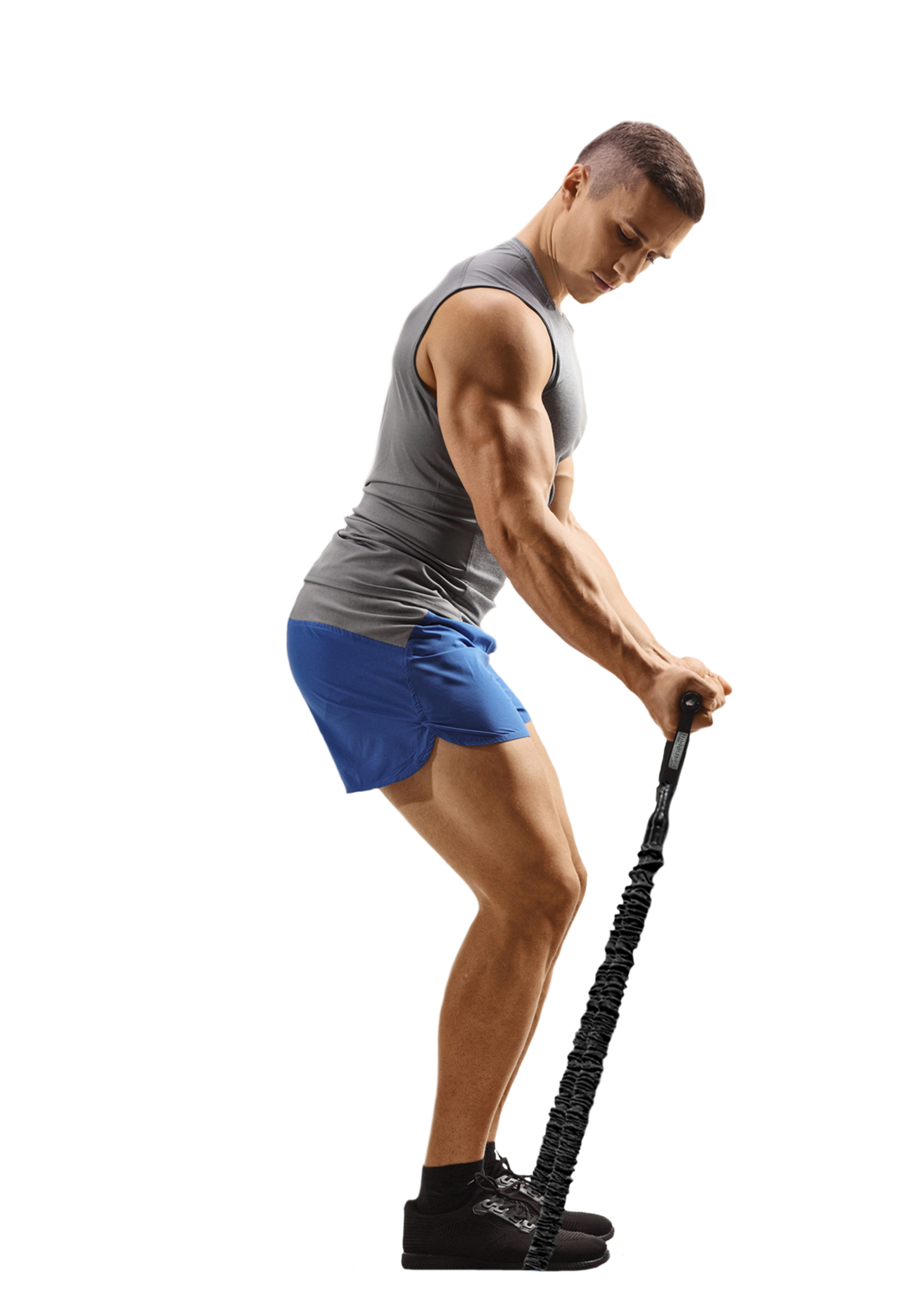In recent years, home workouts have gained immense popularity, allowing individuals to prioritize their fitness goals without needing a gym membership or expensive equipment. Among the tools that have revolutionized home fitness are resistance bands. These compact, versatile bands offer a wide range of exercises and can be easily incorporated into any workout routine, whether you're a beginner or an advanced athlete. To get started, you will need to know what resistance level you should be using. Click here to learn the correct resistance level for your needs and desired outcome.
The Benefits of Resistance Bands for Home Workouts
Before we discuss the specifics, let's highlight the benefits of using resistance bands in your home workout routine:
- Versatility: Resistance bands come in various shapes, sizes, and resistance levels, making them suitable for all fitness levels. Whether you're working on strength, mobility, or endurance, these bands offer a wide range of exercises targeting every muscle group.
- Cost-Effective: Resistance bands are incredibly affordable compared to other fitness equipment. Unlike dumbbells or machines, they don't take up much space, and you can shop for a variety of bands without breaking the bank.
- Portable: One of the major advantages of resistance bands is that they're highly portable. You can take them with you when you travel, to the office, or even outside for an outdoor workout. This portability ensures you never have to miss a workout, no matter where you are.
- Low Impact: Resistance bands are gentle on your joints while still providing a challenge. This makes them ideal for people recovering from injury, those new to fitness, or those who prefer low-impact exercises that are less stressful on the body than heavy weights or high-intensity training.
- Muscle Activation: Resistance bands help engage and activate stabilizing muscles more effectively than traditional weights. This is particularly useful for exercises targeting smaller muscle groups, leading to increased muscle tone and balance.
Types of Resistance Bands
Understanding the different types of resistance bands will help you choose the right ones for your workout routine. If you're unsure, check out our guide on choosing the right resistance band.
- Loop Bands: These bands form a continuous loop and are typically used for lower-body exercises such as squats, lunges, and hip thrusts. They are excellent for glute activation and stabilization exercises.
- Tube Bands with Handles: These bands have handles at each end and can mimic dumbbell or cable exercises, making them ideal for upper-body workouts. Exercises such as bicep curls, shoulder presses, and rows are easily performed with tube bands.
- Figure-8 Bands: Shaped like an "8", these bands have two loops and can be used for both upper and lower body exercises. They are particularly great for chest and back workouts.
- Therapy Bands: Typically thinner and longer, therapy bands are often used for rehabilitation purposes or stretching exercises. They offer less resistance but are fantastic for mobility work.
- Heavy-Duty Bands: Heavy-duty bands offer the highest level of resistance for those who are more advanced in their fitness journey. These are excellent for strength training exercises such as deadlifts or pull-ups.
Full-Body Home Workout with Resistance Bands
A well-rounded workout routine should target all major muscle groups, including your upper body, lower body, and core. Below is a full-body resistance band workout that you can easily perform at home. If you're just starting out, you might want to explore starting workouts using resistance bands for more ideas.
Warm-Up
- Band Pull-Aparts: 2 sets of 15 reps
- Lateral Band Walks: 2 sets of 20 steps
- Arm Circles with Bands: 2 sets of 15 circles in each direction
Upper Body
- Banded Push-Ups: 3 sets of 10-12 reps
- Bicep Curls: 3 sets of 12-15 reps
- Seated Rows: 3 sets of 12-15 reps
- Overhead Shoulder Press: 3 sets of 10-12 reps
Lower Body
- Banded Squats: 3 sets of 12-15 reps
- Glute Bridges with Bands: 3 sets of 15 reps
- Standing Lateral Leg Raises: 3 sets of 12-15 reps per leg
- Reverse Lunges with Bands: 3 sets of 12 reps per leg
Core
- Banded Plank Rows: 3 sets of 12 reps per side
- Russian Twists with Bands: 3 sets of 20 reps
- Banded Dead Bug: 3 sets of 10 reps per side
Cool Down
- Hamstring Stretch
- Chest Opener
- Quad Stretch
Tips for Success
- Progress Slowly: Start with a light or medium resistance band if you're new to resistance training and gradually increase the resistance as you build strength.
- Maintain Proper Form: Proper form is crucial, even with resistance bands, to prevent injury and ensure you're targeting the right muscles.
- Stay Consistent: Incorporate resistance band exercises into your workout routine at least three times a week to see the best results.
- Pair with Other Forms of Exercise: Resistance bands can be combined with other exercises like cardio, yoga, or bodyweight movements for a varied workout.
Elevate Your Home Workout with FitCord
Incorporating resistance bands into your home workout routine is one of the most effective ways to enhance your fitness journey. Whether you're focusing on strength, mobility, or endurance, resistance bands provide a low-impact, versatile option that fits perfectly into any home environment.
Ready to elevate your workout? FitCord offers high-quality resistance bands designed to help you achieve your fitness goals no matter where you are. Explore our range of durable, easy-to-use bands and discover how they can transform your workout routine.



